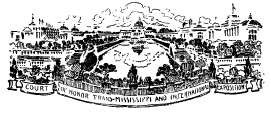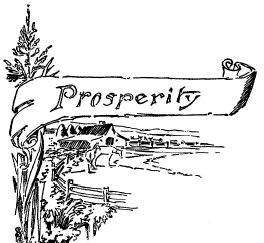|
|
|
|
"Sing the Blessings of the Corn-fields! |
|
|
|
|
|
|
|
|
|
|
88 |
|
|
|
|
The western part of the
state is adapted to stock raising and Omaha is the second
largest live stock and packing center in the world. |
|
|
|
|
89 |
|
|
Brothers, which have now grown into the United States
National and the First National Banks of Omaha. EDUCATION. Along educational lines our
growth has kept pace with our development in other ways,
which is the best evidence of the intelligence of our
people; and statistics show that Nebraska, although it has a
large foreign population, has the least percentage of
illiteracy of any state in the Union. |
|
|
90 |
|
|
|
|
University, which opened at Lincoln, Nebraska, in 1871,
with eight professors and one hundred and thirty pupils. Dr.
A. R. Benton was the first Chancellor. It now has about four
thousand pupils enrolled and is fully equipped to meet the
demands of a first-class university. |
|
|
|
|
91 |
|
|
braska. We, therefore, pay reverent tribute to that honorable body of frontiersmen, the sturdy, strong fibered, princely pioneers who began the history of the beautiful state of Nebraska. "I have no words to speak their praise;
 |
|
|
|
AUTHORITIES CONSULTED. Sorenson's History of Omaha. |
|
 |

|
 |
MARDOS COLLECTION
© 1999, 2000, 2001 for the NEGenWeb Project by Pam Rietsch,
T&C Miller

